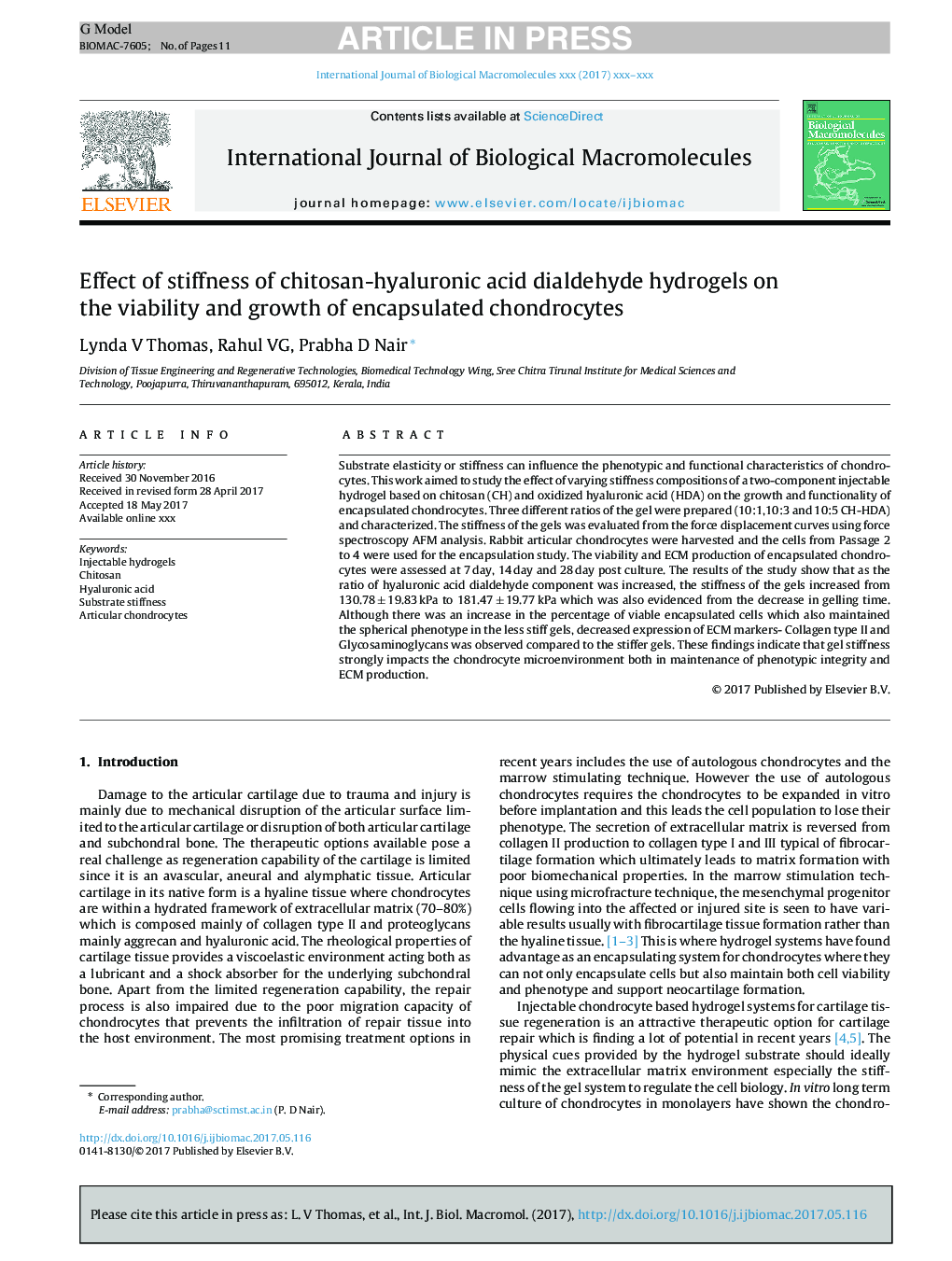| Article ID | Journal | Published Year | Pages | File Type |
|---|---|---|---|---|
| 5511607 | International Journal of Biological Macromolecules | 2017 | 11 Pages |
Abstract
Substrate elasticity or stiffness can influence the phenotypic and functional characteristics of chondrocytes. This work aimed to study the effect of varying stiffness compositions of a two-component injectable hydrogel based on chitosan (CH) and oxidized hyaluronic acid (HDA) on the growth and functionality of encapsulated chondrocytes. Three different ratios of the gel were prepared (10:1,10:3 and 10:5 CH-HDA) and characterized. The stiffness of the gels was evaluated from the force displacement curves using force spectroscopy AFM analysis. Rabbit articular chondrocytes were harvested and the cells from Passage 2 to 4 were used for the encapsulation study. The viability and ECM production of encapsulated chondrocytes were assessed at 7 day, 14 day and 28 day post culture. The results of the study show that as the ratio of hyaluronic acid dialdehyde component was increased, the stiffness of the gels increased from 130.78 ± 19.83 kPa to 181.47 ± 19.77 kPa which was also evidenced from the decrease in gelling time. Although there was an increase in the percentage of viable encapsulated cells which also maintained the spherical phenotype in the less stiff gels, decreased expression of ECM markers- Collagen type II and Glycosaminoglycans was observed compared to the stiffer gels. These findings indicate that gel stiffness strongly impacts the chondrocyte microenvironment both in maintenance of phenotypic integrity and ECM production.
Related Topics
Life Sciences
Biochemistry, Genetics and Molecular Biology
Biochemistry
Authors
Lynda V Thomas, Rahul VG, Prabha D Nair,
